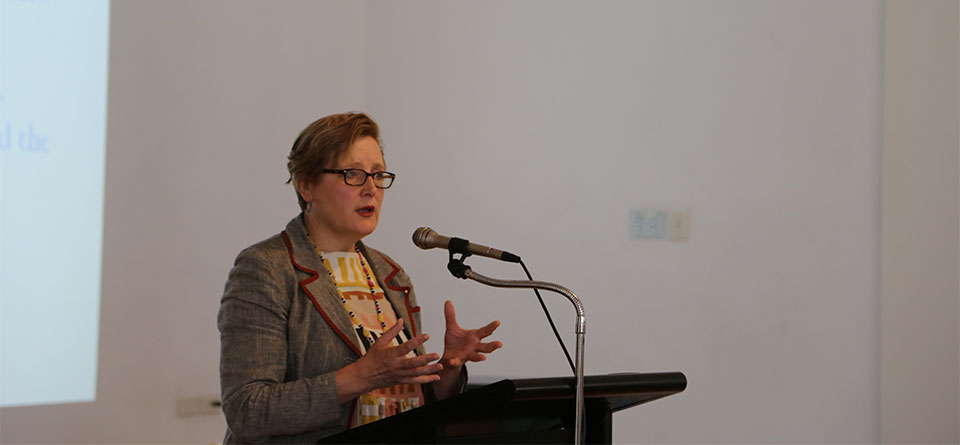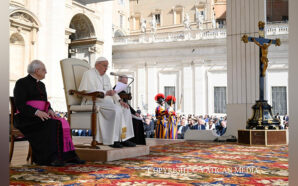The Catholic Church celebrates the Feast Day of St Teresa of Avila on 15 October.
Anna Krohn, Chair of the Life Council of the Australian Catholic Bishops Conference is a scholar and devotee of St Teresa of Avila (1515 – 1582), Doctor of the Church.
“Someone who I go to often is St Teresa,” Anna said.
St Teresa of Avila reformed 17 convents and left behind three major pieces of literature in her autobiography, The Life of Teresa of Avila, The Interior Castle and The Way of Perfection.
What makes Teresa of Avila so compelling to read?
“She’s not a paint by numbers writer,” Anna said. “It’s the force of her personality and the clarity of her conviction. She writes as if you’re there with her, almost like Jane Austen in that matter-of-factness.”
One of her favourite stories is an ironic vignette about Teresa’s love and knowledge of God.
“She had a lot of opponents because people said to her, ‘who do you think you are, a Doctor of the Church?’”
RELATED: Discovering the Feminine Genius
Little did her detractors realise that Teresa would be canonised 40 years after her death and proclaimed Doctor of the Church 400 years later, during the papacy of Pope Paul VI.
Doctors of the Church are renowned for their insight into God, though it is sometimes difficult to place Spanish thinkers in the history of ideas.
“You could almost say she is part of the Spanish Enlightenment,” Anna said. “She’s a Counter-Reformation figure above all, in reaction to the Reformation. She reformed from within and addressed many of the scandals.”
Anna places Teresa’s writing on par with Cervantes and Dante.
“Just because of the vigour of her writing and her influence,” she said. “She had a quirky sort of style that sometimes makes the language different each time. She’s a vivid writer and she speaks in idiomatic Spanish sometimes.”
Professor Edgar Alison Peers, a scholar at the University of Liverpool in the early 20th century, was an influential translator and populariser of Teresa’s writings in the English-speaking world.
“He was responsible for a lot of English readers knowing about these Spanish mystics.”
Records from the Central Catholic Library in Melbourne demonstrate Teresa’s writings were heavily borrowed in the 1950s.
Anna’s favourite book by Teresa is her autobiography and she recommends the J.M. Cohen translation from Penguin paperbacks.
Her spiritual legacy makes her one of the most influential women in history.
“She is an inspiration for other holy women, St Therese of Lisieux, St Teresa Benedicta of the Cross and St Teresa of Calcutta. She has many spiritual daughters,” Anna said.
Teresa has the title Doctor of the Soul because her writings focused on the value of the soul and prayer.
“Prayer is our returning to the centre our dependence on God the creator. It’s not just therapeutic. We owe it to God,” Anna said.
She wrote of prayer as the dynamism driving her mysticism and the driving force of her life.
To her, mental prayer was “nothing but a friendly way of dealing, in which we often find ourselves talking in private with Him whom we know loves us.” (Life of the Holy Mother Teresa of Jesus, trans. E. Allison Peers, Sheed and Ward, London)
She referred to distractions in prayer as wild horses pulling the mind in divergent directions.
Teresa described her early practice of prayer as an interior battle between attachment to the world and to God, which lasted for almost two decades. “I was more occupied in wishing my hour of prayer were over and in listening whenever the clock struck, than in thinking of things that were good.”
Nonetheless, mental prayer did not take on a disproportionate importance in her theology.
Whether social justice, liturgy or moral theology, Teresa was a multi-dimensional figure who integrated all these fields into a complete Christian life.
“Why do we keep returning to these figures, why are they such great doctors? They were able to work in all those fields at once,” Anna said.
Teresa was formed in a family that was devout and strongly aware of its responsibility to be charitable.
“She probably had very romantic ideas about what she meant to be as a child. She said her mother loved reading about romances but in the end she did something far more dramatic than what she imagined.”
Teresa’s prominence in Spanish society also sits at odds with modern myths about women in the Middle Ages.
“They say women didn’t have that sort of standing. I think in the Catholic world women were always more influential because of the high place of religious life and how Christian Queens were placed,” Anna said.
“The women doctors are particularly interesting, to be a Doctor of the Church without a formal education.”
Anna points out that Teresa had a keen sense of biblical Jewish women as pillars of strength, such as Judith and Ruth. Teresa’s grandfather was in fact a Spanish Jew.
The legacy of the Spanish Reconquista is also important to consider. Avila was a walled city in response to Moorish military threat. Large parts of the Iberian Peninsula experienced close to 800 years of Moorish Islamic occupation.
“She would have grown up with the architecture of this slightly embattled version of Christianity,” Anna said.
This imagery informs The Interior Castle, a fortress of increasing beauty and security, analogous to the challenging journey of spiritual progress that St Teresa of Avila calls all people to make today.









